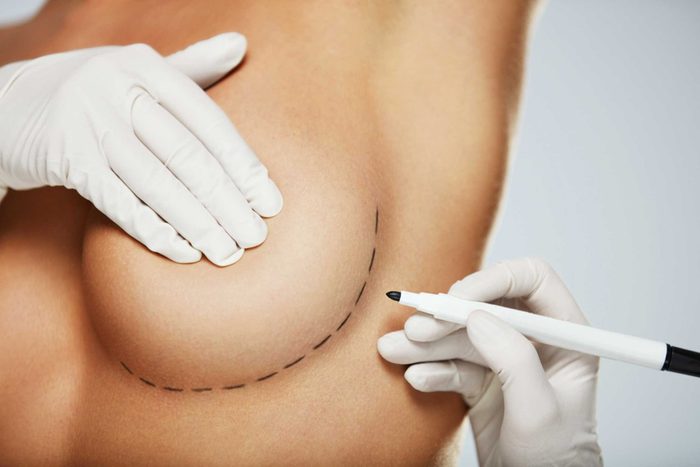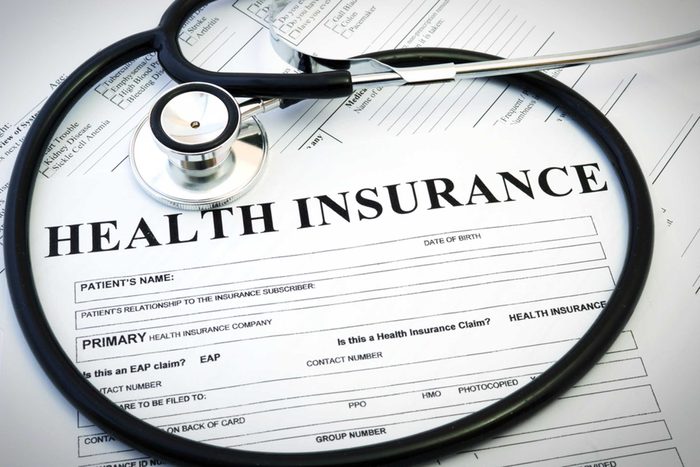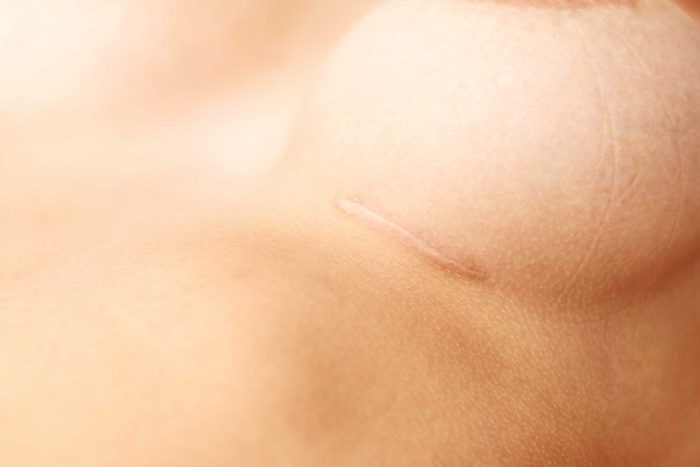
It would be extra challenging to breastfeed
When I was 17 and consulting with my plastic surgeon before this procedure, it honestly never even crossed my mind to ask about the difficulty of breastfeeding after having breast reduction surgery—I was just so anxious to have it done. But I wish I had had that conversation because after I had my second child I wanted nothing more than to breastfeed and have that connection with her, and it was one of the biggest struggles of my life. With my older son, I didn’t even attempt to breastfeed because after finding out I had had a breast reduction, I was told (by some very unsupportive doctors) to not even try. I knew better the second time around, but after making the effort quite literally my full-time job and still having problems, I gave up after one month.
Breastfeeding can be difficult for any new mom—it’s one of those brutal truths new moms should know. But it doesn’t have to be impossible. After discussions with an online BFAR (breastfeeding after reduction) Facebook group, I found that procedures have changed a bit since I had mine in 2013, and if you speak up when meeting with your surgeon, you’ll likely have better luck with breastfeeding. “Current breast reduction techniques preserve a significant amount of the milk-producing ducts to the nipple, thus most women are able to breastfeed after breast reduction surgery,” says Ryan Neinstein, MD, a plastic surgeon in New York City. It’s also true, he adds, that reduction or no reduction, some 18 percent of woman in the general population have problems breastfeeding due to immature development of the duct or milk producing system.

I would go down an entire shirt size!
To be completely honest, weight loss was a side effect I was looking forward to from the procedure. Typically, before you have breast reduction surgery, doctors try to get you to lose weight just to make sure that it’s something you really need done—that your breasts aren’t just large because of a few extra pounds. Being a dancer and a regular runner, I was already in optimal shape, but shopping for clothes because of my big boobs was a constant battle. I always needed to go up one size so the shirt would fit over my large chest, and then it would consume the rest of my body—making me look heavier than I really was. After the breast reduction, I finally went down that one shirt size and looked proportional again. It was pure bliss.

That the procedure wasn’t one-and-done
No one wants to think about something going wrong after breast reduction surgery and needing a follow-up procedure, but it does happen, and it happened to me. “Most plastic surgery procedures have a revision rate of approximately 3 to 7 percent, so 1 in 20 patients may expect a touch-up such as a scar revision to achieve the optimal result,” Dr. Neinstein says.
For me, about a year after the procedure, when my breasts had time to settle, I noticed that my nipples were sitting up too high. I remember trying on Halloween costumes for my college freshman parties and all the sexy costumes showed my nipples peeking out the top. I knew that something wasn’t right, so back to the plastic surgeon I went.
We ended up doing an in-office procedure, one breast at a time, two weeks apart, to lower the nipples. I wasn’t given nearly enough numbing options, and it was really a painful experience. Looking back, I wish we had discussed this possibility with my surgeon before the initial surgery and that I had demanded to be admitted to the hospital for the correction. (Note: These places within a hospital contain the most germs.)

That insurance could be a battle
You’d be shocked to learn the secrets your insurance company is keeping from you, but it’s a pretty safe bet that most women who need a breast reduction for health reasons will be covered. “When woman have their daily activities affected by the weight of their breasts, insurance companies are happy to cover the procedure to improve the lives of their insured clients,” Dr. Neinstein says. “Symptoms of back pain, shoulder pain, and neck pain that are not attributable to other factors are clear signs to the insurance companies that a patient will benefit from the procedure.”
Luckily for me, my surgery was covered in full, but we did have a few hefty copays.

That the scarring would be worse than I thought
Whenever I met with my plastic surgeon, she explained to me that all scarring would be hidden by a bathing suit top or bra, which is true in most cases. I do need to be careful about which bathing suit tops I buy, however, because in some my scars can peek out the edges, and that makes me uncomfortable.
My breast reduction surgery was done using the traditional “anchor-shaped incision,” which I’ve learned is something that doctors are now veering away from. “We are currently moving into an era where we are limiting the dimensions of scarring from the classic anchor pattern to more of a lollipop pattern,” Dr. Neinstein explains. “This reduces the overall scar burden and minimizes healing and down time. Future advances include the use of plasma and ultrasound-based technology to shrink breast tissue without incisions.”
(Psst: These secrets your surgeon won’t tell you.)

That some areas would stay numb forever
After breast reduction surgery, all woman have some numbness in the areola and nipple due to swelling, according to Dr. Neinstein, but few continue to have numbness long term. Well, I guess that I’m one of the lucky few with long-term numbness. It’s not all over, but there are most definitely areas along my anchor-shaped incision that still have no feeling in them. Zero. It doesn’t really bother me most of the time, and it wouldn’t be a deal breaker if I had to choose the procedure again, but if it’s the kind of thing that worries you, it’s worth taking into consideration.

How important recovery really is
Being only 17 when I had the procedure done, I was ready to get back out there and hang out with my friends right away. I didn’t think twice about breast reduction recovery or how much downtime I would really need, which is different for everyone. My surgeon recommended a week of laying low and two weeks of not driving a vehicle to let my body heal. I gave myself only a few days before I was making plans with my friends, which I quickly learned was a mistake. Because I jumped right back into my life, I feel like my recovery ended up taking longer. After a day or two of being up and out of the house, I needed a good week to really just sit and let my body heal. (Here are more ways you could unknowingly be harming your health.)

That I would gain more confidence than I ever imagined
A few weeks after I finally let my body recuperate and I started to feel like myself again, a wave of confidence washed over me. I started to feel comfortable in my skin, something that I couldn’t remember ever feeling. I was able to run without wearing two sports bras. I could fit normally into my ballet leotards. I could shop for bras at Victoria’s Secret. I didn’t experience any back pains or deep marks on my shoulders after taking my bra off at the end of the day. It was amazing the challenges that I was living with each day that I became so used to and almost accepted as part of my life.
Having breast reduction surgery was the best decision for me long term, and it truly gave me the confidence to be the best version of myself.
Medically reviewed by Tia Jackson-Bey, MD.
Next, learn how your diet can help lower your risk for breast cancer.
